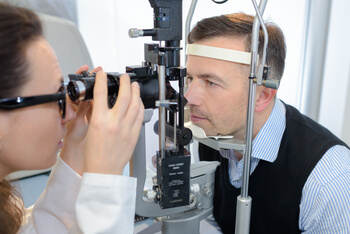
Laser Eye Surgery Procedure — Everything You Need To Know
For those who wear glasses or contact lenses all the time, surgical vision correction through one of the laser eye surgery procedures can be very attractive. There are a number of different laser vision correction options, including the well-known LASIK surgery (laser assisted in situ keratomileusis), SMILE laser eye surgery, and PRK laser eye surgery procedures.
However, the idea of laser vision correction can also be a daunting prospect, as the eyes are such sensitive organs. Keep reading to find out what you should know about the different laser eye surgery procedures.
What is Refractive Error?
The purpose of refractive surgery, including laser eye surgery, is to surgically and permanently correct blurred vision, usually vision for distant objects. Refractive error includes conditions such as short sightedness (myopia), long sightedness (hyperopia), and astigmatism (an abnormally shaped cornea).
Types of Laser Eye Surgery
Each type of laser vision correction procedure has its own advantages and disadvantages. They can also vary in cost and recovery time. Not everyone will be suitable for all the types of laser eye surgery.
All laser eye surgery techniques are based on reshaping the corneal tissue through removing selected areas, typically by using a tool called an excimer laser. The cornea is the transparent tissue at the eye’s surface. By changing the curvature of the cornea, your eye surgeon can alter the way light rays bend through this surface. The goal is to have light focus to a sharp point on the retina at the back of the eye.
LASIK surgery, PRK, and SMILE surgical procedures are all performed under topical or local anaesthesia.
LASIK Eye Surgery (laser assisted in situ keratomileusis)
LASIK stands for laser assisted in situ keratomileusis, and is one of the more well-known methods of refractive surgery.
Once your cornea has been anaesthetised with numbing drops, the surgeon creates a corneal flap from the upper layers of the cornea. This flap can be created either with a femtosecond laser or by using a handheld bladed tool. By opening this flap, the deeper layers can be reshaped using an excimer laser. This reshaping process is guided by a precise computer algorithm.
After the cornea has been modified with the laser beam, the flap is repositioned and allowed to self-seal over the recovery period.
SMILE Surgery (small incision lenticule extraction)
SMILE surgery utilises the latest in laser technology to correct vision. Instead of disrupting the outer layers of the cornea, a femtosecond laser is used to separate a disc (lenticule) of deeper corneal tissue through creating microscopic bubbles. This lenticule can then be extracted through a keyhole incision in the cornea.
This technique is considered to be minimally invasive, which has benefits for corneal stability and recovery time.
PRK Surgery (photorefractive keratectomy)
PRK is an older form of laser eye surgery, but is still valuable, especially for those with thin corneas. Unlike LASIK surgery, it doesn’t require the formation of a corneal flap. Instead, only the very top layer of cells, the corneal epithelium, is removed.
Once the epithelium has been removed, the excimer laser reshapes the underlying cells to adjust the overall shape of the cornea. You may been asked to wear contact lenses to help protect the surface of the cornea while the epithelium regenerates.
Recovery from Laser Surgery
All forms of laser surgery will require a healing process. Certain techniques, such as LASIK surgery and SMILE, tend to be associated with a shorter recovery period compared to PRK.
Immediately after your operation, you can expect some degree of blurry vision. However, if you’ve had SMILE or LASIK surgery, many people report their vision often clears in as quickly as a few hours. Over the following week or so, you may experience:
- Sore, gritty eyes
- Dry eyes
- Redness
- Glare sensitivity
If you’ve had PRK, your vision may remain unclear for a few weeks as the epithelium of the cornea regrows. PRK is also associated with more discomfort. Your surgeon will provide you with post-operative instructions and some medicated eye drops to manage inflammation and prevent infection. You will be required to:
- Avoid rough activities such as contact sports
- Keep the eye area clean of cosmetics and soaps
- Avoid swimming pools, saunas, spas
You’ll also have at least one follow up appointment to check your vision and cornea.
Am I Eligible for Laser Surgery?
Prior to having your laser surgery, you’ll have an initial consultation with the surgeon. During this appointment, you’ll be assessed for your suitability for refractive surgery. Considerations include:
- Your age – if you’re at the age where you’re experiencing near vision problems, laser surgery may not be appropriate
- Your degree of refractive error – this checks whether your short sightedness or long sightedness falls within the treatable range
- The presence of other eye diseases that affect your vision – if you have another condition that limits your vision, the operation may not be worthwhile
- Thickness of your cornea – thin corneas are best suited for PRK rather than LASIK
- Other medical conditions, including those that involve hormonal changes such as pregnancy as this can affect your refractive error and result in over or under correction
Is the Operation Permanent?
Laser surgery is designed to be a permanent procedure, but there are some circumstances that may mean your vision becomes blurry again over time.
Regression
Some people experience an event called regression, which involves the original refractive error slowly returning. This is more commonly found with high degrees of short sightedness but can occur with long sightedness too. In many cases, this can be rectified with an enhancement procedure.
Age
Most will find they end up returning to glasses or contact lenses, particularly as their reading vision declines with age. This is a normal age-related condition known as presbyopia. Finding that you’re wearing glasses again for reading is likely to happen even if your vision for distant objects remains sharp.
If you’re tired of glasses or contact lenses, you may be suitable for laser surgery. Contact Eye Laser Specialists on (03) 9070 5788 to discuss your eligibility.
Note: Any surgical or invasive procedure carries risks. Before proceeding, you should seek a second opinion from an appropriately qualified health practitioner.
Sources
Laser eye surgery https://www.healthdirect.gov.au/laser-eye-surgery
Eyes – laser eye surgery https://www.betterhealth.vic.gov.au/health/conditionsandtreatments/eyes-laser-eye-surgery






